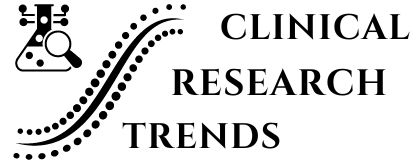Blockchain Technology in Clinical Research
Blockchain technology, initially popularized by cryptocurrencies like Bitcoin, has grown beyond its financial roots to impact various sectors, including healthcare. At its core, blockchain is a decentralized and immutable ledger system that ensures transparency, security, and integrity of data. These attributes make it an attractive solution for industries requiring stringent data management and verification processes.
Clinical research, a cornerstone of medical advancements, involves complex protocols, stringent regulatory requirements, and vast amounts of sensitive data. Ensuring the accuracy, security, and transparency of clinical trial data is paramount to gaining trust and achieving reliable outcomes. However, traditional methods of data management in clinical research are often plagued by inefficiencies, vulnerabilities, and high costs.
In this blog, we will explore the burgeoning intersection of blockchain technology and clinical research. We'll delve into how blockchain can revolutionize data management, enhance security, and streamline the clinical trial process. By examining real-world applications and potential future developments, we aim to highlight the transformative potential of blockchain in improving clinical research methodologies and outcomes.
Understanding Blockchain Technology
Blockchain is a type of distributed ledger technology that records transactions across multiple computers in such a way that the registered transactions cannot be altered retroactively. It operates on a decentralized network where each participant (or node) has access to the entire database and its complete history. This transparency ensures that no single entity can control the entire blockchain, providing a high level of security and trust.
Key Components:
- Blocks: Each block in a blockchain contains a list of transactions. Once a block is completed, it is added to the chain, forming a continuous, unalterable record of all transactions.
- Chains: A chain is a series of blocks linked together. Each block contains a cryptographic hash of the previous block, timestamp, and transaction data.
- Nodes: Nodes are the individual computers that participate in the blockchain network. Each node maintains a copy of the entire blockchain and works to validate and propagate transactions.
- Consensus Mechanisms: These are protocols used by the nodes to agree on the validity of transactions. Common mechanisms include Proof of Work (PoW) and Proof of Stake (PoS), which ensure that all nodes in the network reach a consensus.
How Blockchain Works
The blockchain operates through a process of creating and validating blocks that are then added to the chain.
- Transaction Initiation: A user initiates a transaction which is broadcasted to the network.
- Block Creation: Transactions are grouped into a block. Each block contains a unique code called a cryptographic hash, the hash of the previous block, and a timestamp.
- Validation: Nodes validate the block through consensus mechanisms. In Proof of Work, for example, nodes solve complex mathematical problems to add the block to the chain.
- Adding to the Chain: Once validated, the block is added to the chain, making it an immutable part of the blockchain.
- Distribution: The updated blockchain is distributed across the network, ensuring that all nodes have the same version of the ledger.
Cryptographic Hashing: This is a fundamental part of blockchain security. Each block’s hash is unique and based on its data. If any data in the block changes, the hash will also change, alerting the network to potential tampering.
Decentralization and Distributed Ledger Technology: Unlike traditional databases that are centralized, blockchain operates on a decentralized network. This means no single point of failure and increased security, as the data is replicated across all nodes in the network.
Benefits of Blockchain Technology
Transparency: All transactions are recorded on a public ledger that is accessible to all participants in the network. This transparency helps build trust among stakeholders.
Security: Blockchain’s decentralized nature and cryptographic hashing make it highly resistant to tampering and fraud. Each transaction is encrypted and linked to the previous transaction, creating a chain that is incredibly difficult to alter.
Immutability: Once a block is added to the chain, it cannot be changed. This immutability ensures the integrity of the data, making blockchain an ideal solution for recording sensitive information.
Decentralization: By removing the need for a central authority, blockchain reduces the risk of a single point of failure and increases the system’s resilience and reliability.
In the context of clinical research, these benefits can address many of the current challenges related to data management, security, and transparency, paving the way for more efficient and trustworthy research processes.
Current Challenges in Clinical Research
Data Integrity and Security
One of the most pressing issues in clinical research is ensuring the integrity and security of data. Clinical trials generate vast amounts of sensitive information, including patient data, trial results, and proprietary research. Traditional data management systems are susceptible to manipulation, unauthorized access, and breaches, which can compromise the validity of the research and the privacy of participants. Ensuring secure data storage and sharing is crucial to maintaining trust and compliance with ethical standards.
Patient Recruitment and Retention
Recruiting and retaining a diverse patient population is a significant challenge in clinical research. Diverse participation is essential to ensure that research findings are applicable to different demographics. However, potential participants often have trust and privacy concerns, fearing that their personal health information might be misused or inadequately protected. Additionally, logistical issues, such as travel and time commitments, can deter participation, leading to low recruitment and high dropout rates.
Regulatory Compliance
Clinical research is governed by a complex web of local and international regulations designed to protect patient safety and ensure the reliability of trial results. Navigating these regulatory requirements can be daunting, requiring meticulous documentation and adherence to stringent guidelines. Failure to comply can result in costly delays, legal repercussions, and compromised research outcomes. Ensuring regulatory compliance is critical but often involves significant administrative burdens.
Efficiency and Costs
Conducting clinical trials is an expensive and time-consuming endeavor. High costs are driven by numerous factors, including participant recruitment, data management, regulatory compliance, and administrative overhead. Inefficiencies in trial processes can further inflate costs and extend timelines. Streamlining processes, reducing administrative burdens, and enhancing overall efficiency are essential to making clinical research more sustainable and effective.
By addressing these challenges, blockchain technology holds the potential to revolutionize clinical research, making it more secure, efficient, and trustworthy. In the next sections, we will explore how blockchain can provide solutions to these persistent issues and improve the clinical research landscape.
Potential Applications of Blockchain in Clinical Research
Enhancing Data Security and Integrity
Secure Data Storage and Sharing: Blockchain technology can provide a highly secure environment for storing and sharing clinical trial data. Each transaction or data entry is encrypted and linked to the previous one, creating a chain that is resistant to unauthorized access and tampering. This ensures that sensitive patient information and research data are protected against breaches and leaks.
Ensuring Data Immutability and Preventing Tampering: Once data is recorded on the blockchain, it cannot be altered or deleted. This immutability guarantees that the integrity of clinical trial data is maintained, reducing the risk of data manipulation. Researchers, regulators, and stakeholders can trust that the data reflects the true outcomes of the trials, enhancing the credibility and reliability of the research.
Improving Patient Recruitment and Retention
Building Trust Through Transparent and Secure Data Handling: Patients are more likely to participate in clinical trials if they are confident that their personal information is secure and their privacy is respected. Blockchain’s transparent and secure data handling can build this trust, addressing concerns about data misuse and encouraging wider participation from diverse populations.
Using Blockchain for Patient Consent Management and Recruitment Processes: Blockchain can streamline the process of obtaining and managing patient consent. Smart contracts can be used to automate consent forms, ensuring that patients are fully informed and that their consent is securely recorded and easily accessible. This reduces administrative burdens and enhances the efficiency of the recruitment process.
Streamlining Regulatory Compliance
Creating a Tamper-Proof Audit Trail for Regulatory Compliance: Blockchain can provide a transparent and tamper-proof audit trail for all transactions and data entries related to a clinical trial. This makes it easier for researchers to demonstrate compliance with regulatory requirements and for auditors to verify that all processes have been followed correctly. This streamlined compliance can reduce the risk of regulatory delays and penalties.
Facilitating Real-Time Reporting and Monitoring: Blockchain enables real-time data sharing and monitoring, allowing regulators and other stakeholders to access up-to-date information about the progress of a clinical trial. This enhances transparency and can accelerate the regulatory review process, bringing new treatments to market faster.
Increasing Efficiency and Reducing Costs
Automating Administrative Processes Through Smart Contracts: Smart contracts are self-executing contracts with the terms of the agreement directly written into code. In clinical research, smart contracts can automate various administrative tasks, such as patient enrollment, data entry, and payments. This reduces the need for intermediaries, minimizes administrative overhead, and accelerates the research process.
Reducing Intermediaries and Administrative Overhead: Blockchain’s decentralized nature reduces the need for intermediaries in data management and verification processes. This can significantly cut down on administrative costs and complexities, allowing researchers to focus more resources on the core activities of the clinical trial.
By leveraging these applications, blockchain technology can address many of the challenges faced in clinical research, leading to more secure, efficient, and reliable trials. The integration of blockchain into clinical research not only promises to enhance current practices but also paves the way for innovative approaches to future research endeavors.
Case Studies and Examples
MedRec
Overview of MedRec: MedRec is a blockchain-based electronic health records (EHR) system developed by MIT. It aims to solve issues related to fragmented healthcare records, data sharing, and patient privacy. MedRec uses blockchain to create a decentralized, patient-centric EHR system where patients have control over their own health data.
Impact on Data Sharing, Patient Privacy, and Research Efficiency: MedRec allows healthcare providers and researchers to access patient data with the patient’s consent, ensuring that sensitive information is securely shared and managed. This enhances data privacy and security, reducing the risk of breaches and unauthorized access. By providing a unified and tamper-proof record of patient data, MedRec improves the efficiency of clinical research by enabling seamless data sharing and reducing the time spent on data verification and reconciliation.
PharmaLedger
Description of the PharmaLedger Project: PharmaLedger is a European Union-funded project that aims to create a blockchain-based platform for the healthcare and pharmaceutical sectors. The project involves multiple stakeholders, including pharmaceutical companies, healthcare providers, and regulatory bodies, collaborating to enhance the transparency, security, and efficiency of clinical trials and supply chain management.
Benefits for Clinical Trials, Supply Chain Management, and Patient Engagement: PharmaLedger offers several benefits for clinical research. It provides a secure and transparent platform for managing clinical trial data, ensuring data integrity and regulatory compliance. The project also enhances supply chain management by providing a traceable and tamper-proof record of pharmaceutical products from manufacturing to distribution. Additionally, PharmaLedger improves patient engagement by offering secure and transparent mechanisms for managing patient consent and participation in clinical trials.
Notable Labs
Innovations at Notable Labs: Notable Labs is at the forefront of integrating blockchain technology into clinical research. Their precision medicine platform leverages blockchain to ensure data integrity and security, particularly in the context of their Fosciclopirox trial. By utilizing blockchain, Notable Labs enhances the accuracy and reliability of patient outcomes, fostering greater trust and transparency in their research processes.
Impact on Clinical Research Efficiency and Trust: Notable Labs' use of blockchain technology improves the efficiency of their clinical trials by automating data management and ensuring compliance with regulatory standards. This not only reduces administrative burdens but also accelerates the trial process, allowing for faster development and approval of new therapies. The transparent nature of blockchain also builds trust with patients and stakeholders, encouraging greater participation and collaboration.
Patientory
How Patientory Uses Blockchain for Secure Health Data Management: Patientory is a blockchain-based platform designed to securely manage and store health data. By leveraging blockchain technology, Patientory provides patients with control over their own health information, enabling them to share data with healthcare providers and researchers securely and transparently.
Implications for Clinical Research and Patient Trust: Patientory’s approach to health data management has significant implications for clinical research. By ensuring that patient data is securely stored and shared only with authorized parties, Patientory enhances patient trust and willingness to participate in clinical trials. The platform’s transparency and security features reduce concerns about data privacy and misuse, fostering a more collaborative and trust-based relationship between patients, healthcare providers, and researchers.
These case studies demonstrate the transformative potential of blockchain technology in clinical research. By enhancing data security, improving patient recruitment and retention, streamlining regulatory compliance, and increasing efficiency, blockchain can address many of the challenges faced in clinical research today. As the adoption of blockchain in healthcare continues to grow, its impact on clinical research is likely to become even more profound, paving the way for more reliable, efficient, and patient-centric research practices.
Challenges and Limitations
Technical Challenges
Scalability Issues: One of the primary technical challenges of blockchain technology is scalability. As the number of transactions increases, the size of the blockchain grows, leading to slower processing times and higher costs. This can be particularly problematic in clinical research, where large volumes of data are generated and need to be processed quickly and efficiently.
Integration with Existing Systems: Integrating blockchain with existing healthcare and clinical research systems can be complex. Legacy systems often lack the infrastructure to support blockchain technology, requiring significant modifications or complete overhauls. This integration challenge can hinder the adoption of blockchain in clinical research, as institutions may be reluctant to make the necessary investments in time and resources.
Regulatory and Legal Considerations
Navigating Complex Regulatory Landscapes: The regulatory landscape for clinical research is intricate and varies significantly across different regions. Implementing blockchain technology requires navigating these complex regulations to ensure compliance. This includes adhering to guidelines set by regulatory bodies such as the FDA, EMA, and others, which can be time-consuming and challenging.
Ensuring Compliance with Data Protection Laws: Data protection laws, such as GDPR in Europe and HIPAA in the United States, impose strict requirements on how personal data is handled. Blockchain’s immutable nature makes it difficult to modify or delete data, which can conflict with the “right to be forgotten” principle in GDPR. Ensuring that blockchain implementations comply with these data protection laws is crucial to avoid legal repercussions.
Adoption and Implementation
Resistance to Change Within the Industry: The healthcare and clinical research sectors are often resistant to change due to the critical nature of their work and the high stakes involved. Adopting new technologies like blockchain requires a cultural shift and a willingness to move away from traditional methods. Overcoming this resistance is essential for the successful implementation of blockchain solutions.
High Initial Costs and Resource Requirements: Implementing blockchain technology can involve substantial initial costs, including investments in new infrastructure, training, and development. Additionally, maintaining and scaling blockchain systems requires ongoing resources and expertise. These high costs and resource requirements can be a barrier to adoption, particularly for smaller organizations with limited budgets.
Despite these challenges, the potential benefits of blockchain technology in clinical research are significant. Addressing these limitations through ongoing research, collaboration, and innovation will be key to unlocking the full potential of blockchain and transforming the clinical research landscape.
Future Directions and Innovations
Interoperability and Standardization
Efforts to Create Standardized Protocols for Blockchain in Healthcare: For blockchain to realize its full potential in clinical research, there must be standardized protocols that ensure consistent implementation across different platforms and organizations. Industry leaders and regulatory bodies are working towards developing these standards to facilitate smooth integration and interoperability. Standardized protocols will help streamline processes, reduce costs, and enhance the reliability of blockchain systems in clinical research.
Importance of Interoperability for Widespread Adoption: Interoperability is crucial for the widespread adoption of blockchain technology in healthcare. It allows different systems and organizations to communicate and exchange data seamlessly, breaking down silos and fostering collaboration. Ensuring that blockchain systems can integrate with existing healthcare infrastructure and other emerging technologies will be key to driving adoption and maximizing the benefits of blockchain in clinical research.
Emerging Technologies and Trends
Integration with Artificial Intelligence and Machine Learning: The integration of blockchain with artificial intelligence (AI) and machine learning (ML) holds immense potential for advancing clinical research. AI and ML can analyze vast amounts of data stored on the blockchain to identify patterns, predict outcomes, and optimize trial designs. This synergy can enhance the precision and efficiency of clinical trials, leading to faster and more accurate results.
Potential of Blockchain in Personalized Medicine and Genomics: Blockchain technology can significantly impact personalized medicine and genomics by providing secure and transparent data management solutions. Patients can control access to their genomic data, ensuring privacy and enabling more personalized treatment plans. Blockchain’s immutable nature ensures the accuracy and integrity of genomic data, which is critical for research and the development of targeted therapies.
Collaborative Initiatives
Importance of Industry-Wide Collaboration: Collaboration among various stakeholders, including pharmaceutical companies, healthcare providers, regulatory bodies, and technology developers, is essential for the successful implementation of blockchain in clinical research. Collaborative initiatives can drive innovation, share best practices, and address common challenges, leading to more effective and efficient research processes.
Examples of Ongoing Collaborative Projects and Consortiums: Several collaborative projects and consortiums are already exploring the use of blockchain in healthcare and clinical research. For instance, the MediLedger Project, a consortium of pharmaceutical companies and technology providers, aims to enhance the pharmaceutical supply chain using blockchain. Similarly, the Clinical Trials Transformation Initiative (CTTI) is exploring blockchain’s potential to improve clinical trial processes. These collaborative efforts demonstrate the power of pooling resources and expertise to advance blockchain technology in clinical research.
Recap of the potential benefits of blockchain in clinical research
Blockchain technology offers numerous benefits for clinical research, addressing some of the most critical challenges in the field:
- Enhanced Data Security and Integrity: Blockchain provides a secure and tamper-proof system for storing and sharing clinical trial data, ensuring the accuracy and reliability of research outcomes.
- Improved Patient Recruitment and Retention: By building trust through transparent and secure data handling, blockchain can help recruit and retain diverse patient populations, essential for comprehensive research.
- Streamlined Regulatory Compliance: Blockchain creates a transparent, immutable audit trail that simplifies regulatory compliance and facilitates real-time monitoring.
- Increased Efficiency and Reduced Costs: Through smart contracts and automation, blockchain can reduce administrative overhead, streamline processes, and lower the overall costs of conducting clinical trials.
While the potential benefits of blockchain in clinical research are significant, realizing these benefits requires ongoing innovation and collaboration among stakeholders. The development of standardized protocols, integration with emerging technologies, and industry-wide cooperative initiatives are crucial steps toward the successful implementation of blockchain solutions.
We encourage all stakeholders in the clinical research ecosystem—pharmaceutical companies, healthcare providers, regulatory bodies, technology developers, and investors—to explore and invest in blockchain solutions. By embracing this transformative technology, we can overcome existing challenges and drive forward a more secure, efficient, and patient-centric approach to clinical research.
Stay informed about the latest developments in blockchain and clinical research by subscribing to our blog. We regularly publish updates, insights, and expert analyses to keep you at the forefront of industry innovations.
We value your thoughts and experiences. Please share your insights, questions, and stories in the comments section below. Your input is invaluable in fostering a vibrant and collaborative community.










Join Our New Letter










